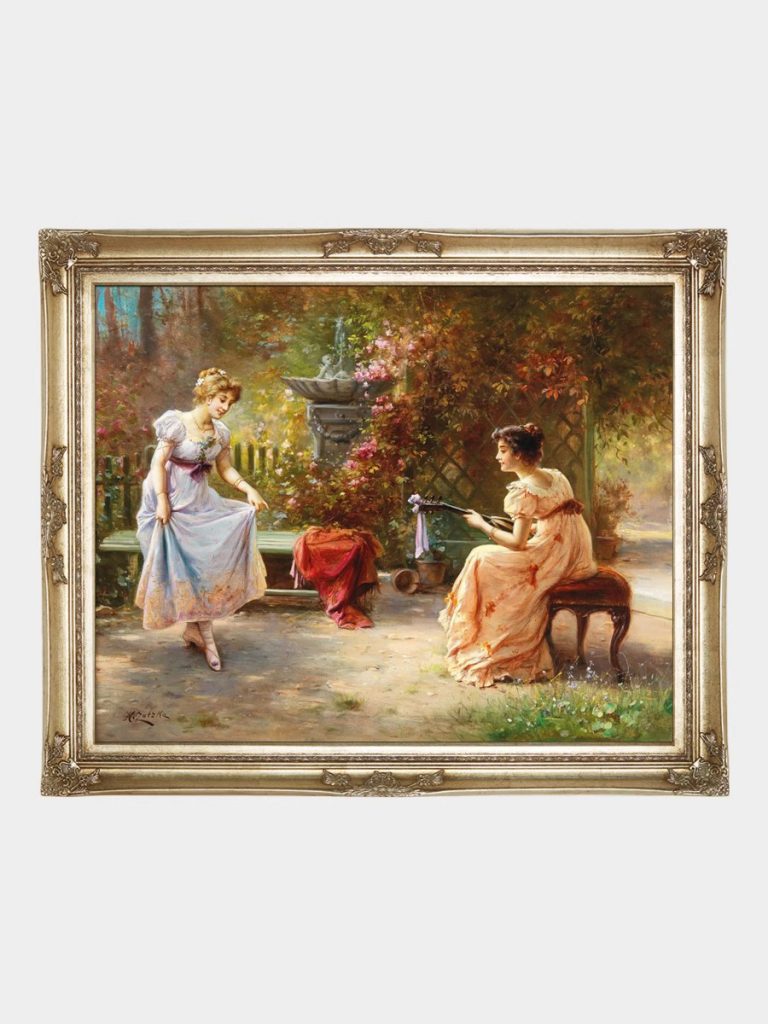Evaluating the Collectible Value of Hand-Painted Oil Art: Key Factors to Consider Beyond Aesthetics
The collectible value of hand-painted oil art is shaped by a complex interplay of historical significance, artistic innovation, and market dynamics. Unlike mass-produced prints or digital reproductions, original oil paintings carry intrinsic worth tied to their uniqueness, materiality, and cultural resonance. Collectors and investors often assess these works through lenses such as artist reputation, provenance, and thematic relevance. Below, explore the nuanced criteria that determine why certain oil paintings gain enduring value while others remain overlooked.
1. Artist Reputation and Historical Context: The Weight of Legacy
An artist’s standing in art history profoundly influences a painting’s long-term value. Established masters from movements like the Renaissance, Baroque, or Impressionist eras command attention due to their foundational roles in shaping artistic traditions. However, contemporary artists can also achieve collectible status by pioneering new techniques or addressing urgent social themes. For instance, a 20th-century painter known for blending abstract expressionism with political commentary might attract collectors interested in both aesthetic innovation and cultural critique.
To assess an artist’s relevance, research their exhibition history, critical reception, and inclusion in public or private collections. Have they been featured in major galleries or museums? Do art historians frequently reference their work in academic studies? A painter whose oeuvre aligns with broader historical narratives—such as the rise of feminism in art or the exploration of postcolonial identities—often gains layers of significance that appeal to collectors seeking intellectual and emotional depth.
2. Provenance and Authenticity: Tracing the Painting’s Journey
Provenance refers to the documented history of a painting’s ownership, exhibition, and conservation. A well-documented provenance adds credibility and value, as it reduces the risk of forgery and establishes the work’s place within art-world networks. For example, a painting once owned by a renowned collector or displayed in a prestigious institution carries a stamp of approval that enhances its desirability. Conversely, gaps in provenance or unclear ownership chains can raise doubts, even if the artwork is technically superb.
Authenticity is equally critical. Collectors prioritize works verified through expert analysis, such as examinations of brushstroke patterns, pigment composition, or canvas aging. Technical reports from conservation specialists or certifications from artist foundations (where applicable) provide reassurance. A painting attributed to a famous artist but lacking conclusive proof of authorship may struggle to retain value over time, highlighting the importance of rigorous verification processes.
3. Rarity and Condition: The Dual Pillars of Physical Integrity
Rarity drives collectible value by limiting supply while amplifying demand. Oil paintings created during an artist’s brief experimental phase, as part of a limited series, or in response to a specific historical event often become prized for their uniqueness. For example, a landscape painted during a rare solar eclipse or a portrait commissioned for a diplomatic gift might hold heightened interest due to its contextual rarity.
Condition plays a complementary role. Paintings free from significant damage—such as cracks, discoloration, or overpainting—retain their original visual impact and structural stability. Collectors favor works that have been professionally conserved, as improper restoration can permanently alter an artwork’s appearance or value. Even minor flaws, like a small tear or faded varnish, may deter buyers unless the painting’s historical importance outweighs its physical imperfections.
4. Thematic Relevance and Cultural Resonance: Connecting Past to Present
Themes explored in a painting can elevate its collectible status by aligning with contemporary conversations or enduring human concerns. Works addressing identity, environmental collapse, or technological ethics often resonate across generations, attracting collectors who view art as a mirror to societal shifts. For instance, a mid-20th-century painting depicting urbanization’s impact on rural life might gain renewed relevance in an era of rapid globalization.
Cultural resonance extends to regional or national narratives. A painting rooted in a specific locale’s history—such as a depiction of a revolutionary event or a folk tradition—can appeal to collectors interested in preserving cultural heritage. Artworks that transcend their original context to speak to universal experiences, however, tend to have broader, more sustainable appeal.
5. Market Trends and Institutional Support: The External Forces Shaping Value
While intrinsic qualities dominate long-term value, external factors like market trends and institutional recognition influence short-term desirability. A surge in interest in figurative painting, for example, might temporarily elevate the prices of realist oil works, even if abstract art dominates historical prestige. Similarly, inclusion in high-profile auctions or biennials can expose a painting to global audiences, sparking bidding wars among competitive collectors.
Institutional support, such as acquisitions by museums or grants awarded to artists, also signals credibility. When a major gallery agrees to represent an emerging painter, it often validates their potential, encouraging private collectors to invest early. However, market dynamics are notoriously volatile; a painting’s value can fluctuate based on shifting tastes, economic conditions, or geopolitical events. Collectors who prioritize passion over speculation are more likely to weather these fluctuations, as their focus remains on the artwork’s enduring significance rather than its resale potential.
The collectible value of hand-painted oil art is a multifaceted phenomenon, shaped by historical context, physical integrity, and cultural relevance. By examining an artist’s legacy, verifying provenance, assessing rarity, and understanding thematic depth, collectors can make informed decisions that transcend fleeting trends. Ultimately, the most valuable paintings are those that continue to inspire, challenge, and provoke thought long after their creation—a testament to the enduring power of human creativity.
